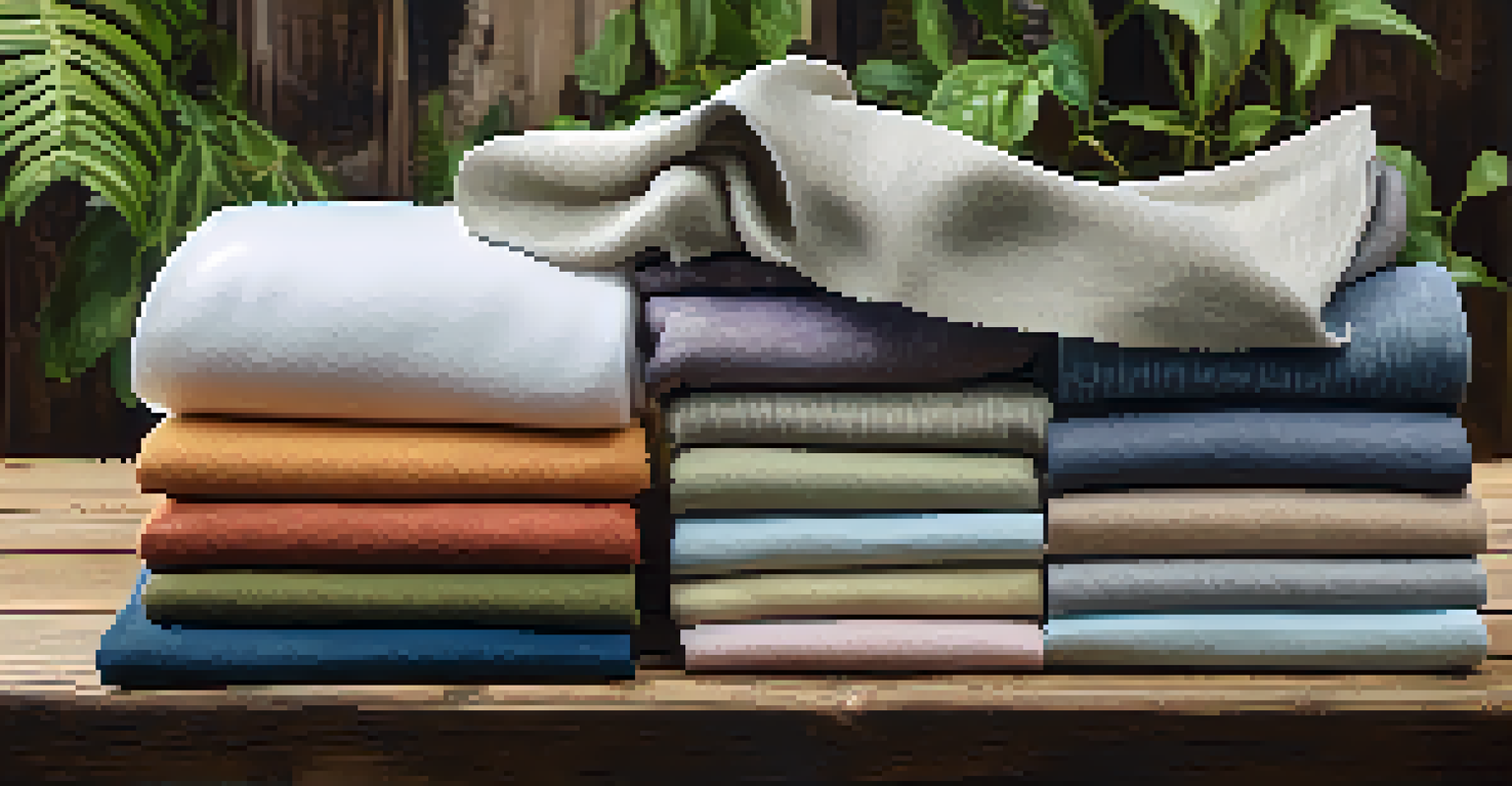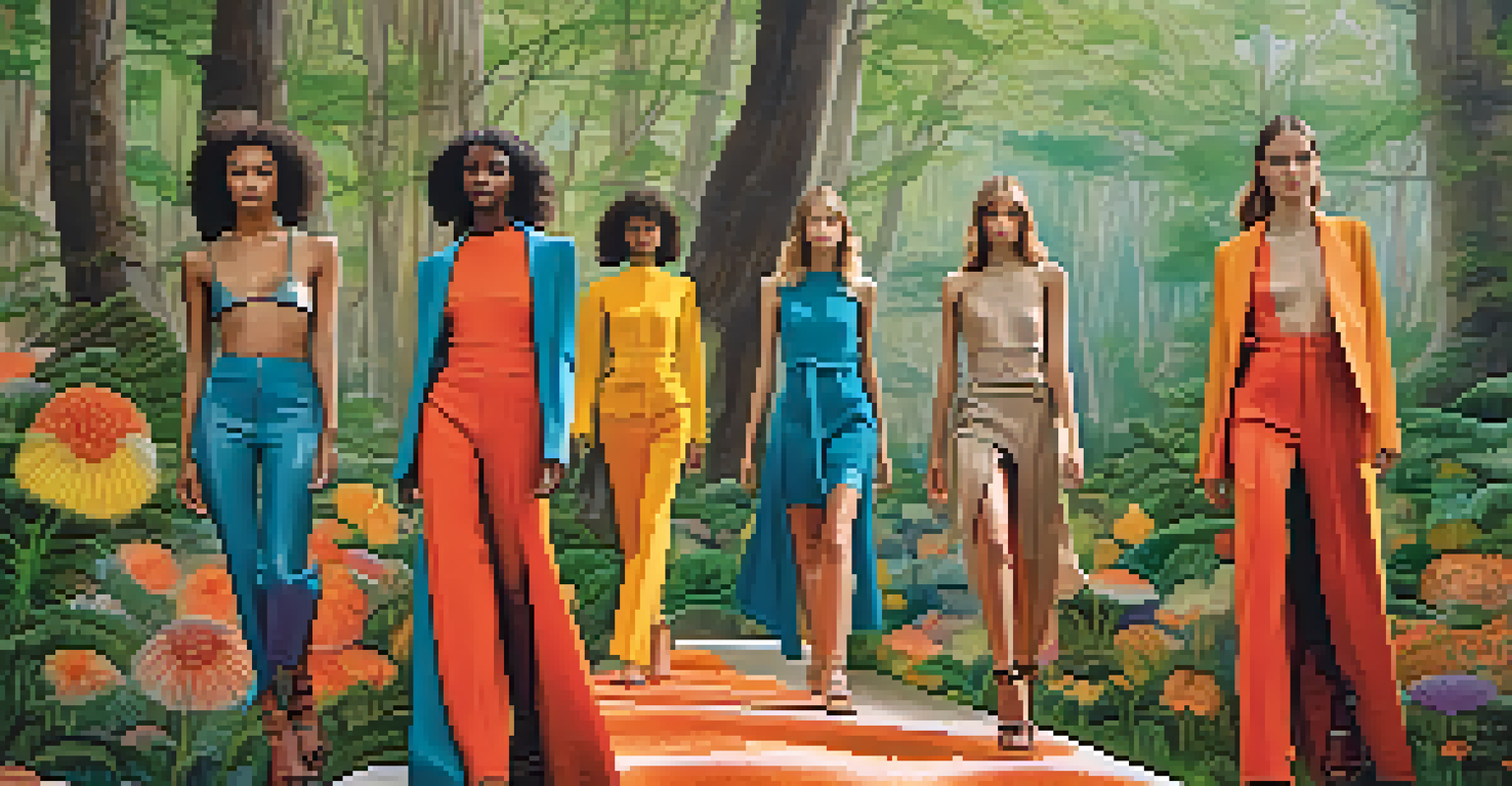Eco-Friendly Fabrics: Reducing the Fashion Industry's Footprint

Understanding the Fashion Industry's Environmental Impact
The fashion industry is one of the largest polluters in the world, with its processes contributing to excessive waste and carbon emissions. Each year, millions of tons of textiles end up in landfills, exacerbating environmental issues. Moreover, the production of conventional fabrics often involves harmful chemicals that can pollute water sources and harm ecosystems.
Fashion is the armor to survive the reality of everyday life.
It’s not just about the waste; the resources consumed in creating traditional garments are staggering. From water-intensive cotton farming to energy-hungry synthetic fabric production, the environmental toll is heavy. Understanding this impact is crucial for both consumers and manufacturers as we seek to make better choices.
By shining a light on these issues, we can encourage a shift towards more sustainable practices. This is where eco-friendly fabrics come into play, offering a glimmer of hope for a greener future in fashion.
What Are Eco-Friendly Fabrics?
Eco-friendly fabrics are materials made with minimal environmental harm. They can be derived from organic sources, recycled materials, or produced using sustainable practices. Examples include organic cotton, hemp, Tencel, and recycled polyester, each designed to reduce the overall carbon footprint associated with conventional textiles.

These fabrics not only aim to lessen environmental impact but also promote ethical labor practices. Many eco-friendly brands prioritize fair wages and safe working conditions for their workers, ensuring that sustainability extends beyond just materials to encompass social responsibility.
Fashion's Environmental Crisis
The fashion industry significantly contributes to pollution and waste, prompting a need for sustainable practices.
In essence, eco-friendly fabrics represent a holistic approach to fashion, addressing both environmental and ethical concerns. By choosing these materials, consumers can play a part in fostering positive change in the industry.
Benefits of Choosing Eco-Friendly Fabrics
Opting for eco-friendly fabrics comes with a myriad of benefits, both for the planet and the consumer. These fabrics often have a lower ecological footprint, meaning they consume fewer resources during production. For example, organic cotton uses significantly less water than conventional cotton, making it a more sustainable choice.
Sustainability is no longer about doing less harm. It's about doing more good.
Additionally, many eco-friendly fabrics are designed to be more durable, which can lead to longer-lasting garments. This not only reduces the frequency of purchases but also minimizes waste over time. Choosing quality over quantity is an empowering shift in consumer behavior that can make a substantial difference.
Beyond the environmental aspects, eco-friendly fabrics often offer unique textures and styles. This means that not only are you making a responsible choice, but you can also enjoy fashionable, high-quality clothing that stands out.
The Role of Certifications in Eco-Friendly Fabrics
When navigating the world of eco-friendly fabrics, certifications can provide valuable guidance. Look for labels like Global Organic Textile Standard (GOTS) or OEKO-TEX Standard 100, which ensure that fabrics meet specific environmental and safety criteria. These certifications help consumers identify truly sustainable options amid a sea of greenwashing.
Certifications often encompass various aspects of production, from the cultivation of raw materials to the final product. By understanding these labels, consumers can make informed choices and support brands that prioritize sustainability.
Eco-Friendly Fabrics Explained
Eco-friendly fabrics reduce environmental harm and promote ethical labor, offering a holistic approach to sustainable fashion.
In turn, this consumer knowledge can push the industry towards more responsible practices. As demand for certified eco-friendly fabrics grows, more brands are likely to adopt sustainable methods, creating a positive feedback loop for the environment.
Innovative Eco-Friendly Fabric Alternatives
The world of eco-friendly fabrics is constantly evolving, with innovative alternatives making waves in the fashion industry. One exciting example is Piñatex, a leather alternative made from pineapple leaf fibers, which not only provides a sustainable option but also supports local farmers. This kind of innovation demonstrates the potential of using waste materials creatively.
Another noteworthy alternative is mushroom leather, or Mylo, which offers a biodegradable and cruelty-free option for those seeking leather-like qualities. As technology advances, such alternatives are becoming more accessible, inviting fashion designers to experiment and create sustainable yet stylish pieces.
These innovations not only help reduce waste but also inspire a new wave of creativity in fashion. By embracing these alternatives, consumers can support the development of sustainable materials that could redefine the industry.
How Brands Are Adopting Eco-Friendly Practices
Many fashion brands are recognizing the importance of sustainability and are starting to incorporate eco-friendly fabrics into their collections. Some companies are even committing to using 100% sustainable materials by a specific year, setting benchmarks that inspire change across the industry. This shift is not just a trend; it reflects a growing awareness of the need for responsible fashion.
Brands are also focusing on transparent supply chains, allowing consumers to see where and how their garments are made. This transparency builds trust and encourages a more mindful approach to fashion consumption. When consumers understand the journey of their clothing, they are more likely to appreciate and care for it.
Innovations in Sustainable Materials
New alternatives like Piñatex and Mylo showcase the potential of eco-friendly innovations in reshaping the fashion industry.
Moreover, collaborations between eco-friendly brands and mainstream retailers are becoming more common. These partnerships can introduce sustainable options to a broader audience, making eco-friendly fashion accessible to everyone.
The Future of Eco-Friendly Fabrics in Fashion
As awareness of environmental issues continues to grow, the future of eco-friendly fabrics looks promising. With ongoing innovations and a shift in consumer demand, we can expect to see even more sustainable materials making their way into mainstream fashion. This evolution will not only benefit the planet but also encourage a more responsible approach to style.
Education will play a key role in this transition, empowering consumers to make informed decisions. As more people embrace sustainable fashion, brands will feel the pressure to adapt and improve their practices. This creates a cycle of positive change that can transform the industry at large.

Ultimately, the future of fashion lies in our hands. By choosing eco-friendly fabrics and supporting responsible brands, we can all contribute to a more sustainable and ethical fashion landscape.